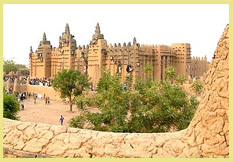




Egypt after the Pharaohs

The great Pharaonic period of Ancient Egypt lasted 3,000 years, but finally came to an end in 31 BC at the hands of the Romans. Later, the Romans embraced Christianity, and many of the traditions of Pharaonic Egypt were lost.
Three world heritage sites bear witness to the changing values and beliefs in Egypt after the Pharoahs, driven by the adoption of Christianity and then later, Islam. Abu Mena is an early Christian holy city, situated near Alexandria at the pilgrimage site of an early Christian martyr, who died and was buried there in AD 296. Following the establishment of a monastery at the burial site, a settlement developed, expanding rapidly during the 5th and 6th centuries, to become a major centre by about AD 600. At about this time, an Orthodox Christian monastery was established in the Saint Catherine Area, close to Mount Sinai, where the Old Testament records that Moses received the Tablets of the Law (i.e. Ten Commandments). Mount Sinai, also known as Jebel Musa and Mount Horeb, is sacred to three world religions (Christianity, Islam and Judaism), and the Monastery is the oldest Christian monastery in the world that remains in use for its original function. The third of Egypt’s post-Pharaonic world heritage sites is Historic Cairo where, in the 10th century, a major Islamic city was established. This later became the centre of the Islamic world, reaching its golden age in the 14th century. Today the area of Islamic Cairo is famous for its mosques, madrasas, hammams and fountains, and has more than 600 classified monuments built between the 7th and 20th centuries.
To read more about each of Egypt’s world heritage sites from the period after the Pharaohs, and see a slideshow of each place, follow these links:




.jpg)